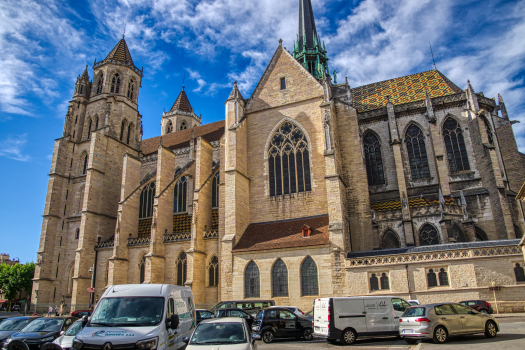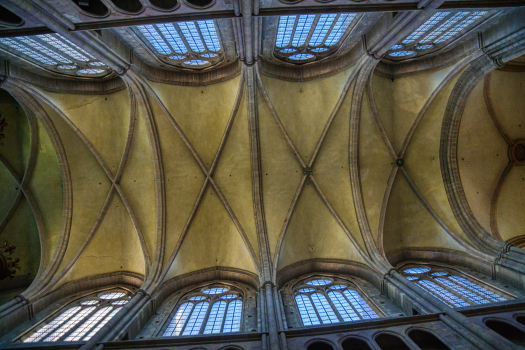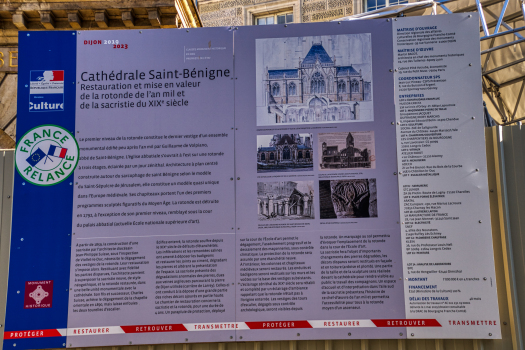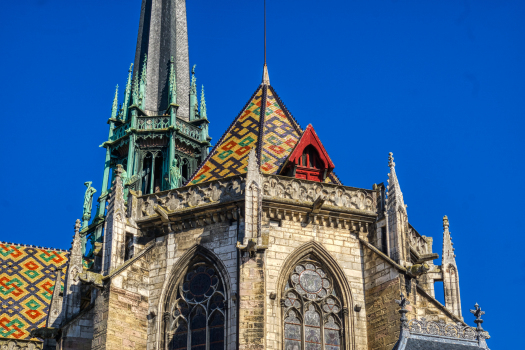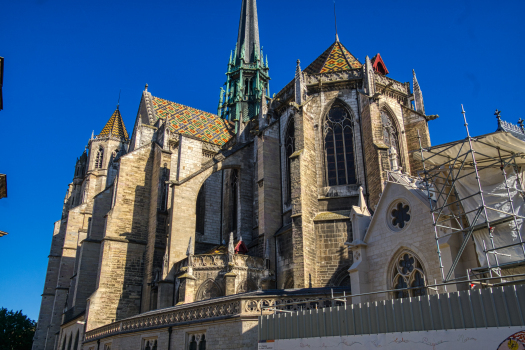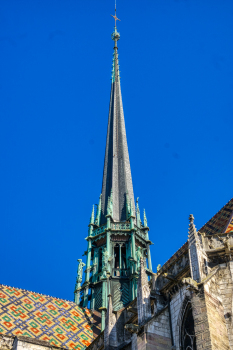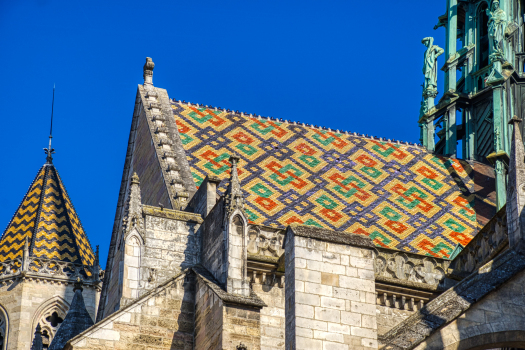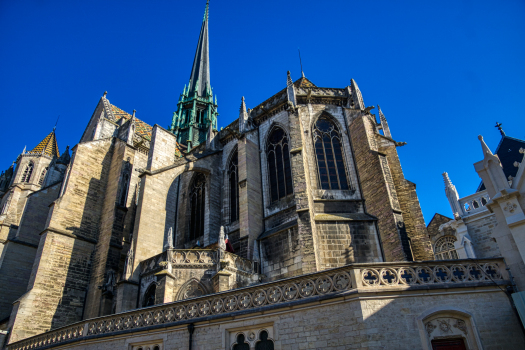General Information
| Name in local language: | Cathédrale Saint-Bénigne |
|---|---|
| Other name(s): | Cathedral of Saint Benignus |
| Beginning of works: | 1280 |
| Completion: | 1393 |
| Status: | in use |
Project Type
| Structure: |
Rib vault |
|---|---|
| Function / usage: |
Cathedral |
| Architectural style: |
Gothic Romanesque |
| Material: |
Masonry structure |
Awards and Distinctions
| 2015 |
part of an ensemble
for registered users |
|---|---|
| 1846 |
for registered users |
Location
| Location: |
Dijon, Côte-d'Or (21), Bourgogne-Franche-Comté, France |
|---|---|
| Coordinates: | 47° 19' 17.40" N 5° 2' 4.27" E |
Technical Information
Dimensions
| length | 68 m | |
| nave | height to key of vault | 26 m |
| side aisles | height to key of vault | 14.3 m |
| western façade | length | 29 m |
Chronology
| 30 October 1016 | The new church is dedicated. |
|---|---|
| 9 April 1393 | The new church is dedicated. |
Excerpt from Wikipedia
Dijon Cathedral, or at greater length the Cathedral of Saint Benignus of Dijon (French:Cathédrale Saint-Bénigne de Dijon), is a Roman Catholic church located in the town of Dijon, Burgundy, France, and dedicated to Saint Benignus of Dijon. The Gothic cathedral building, constructed between 1280 and 1325, and dedicated on 9 April 1393, is a listed national monument.
Originating as the church of the Abbey of St. Benignus, it became the seat of the Diocese of Dijon during the French Revolution, replacing the previous cathedral when it was secularised, and has been the seat of the succeeding Archbishopric of Dijon since the elevation of the diocese in 2002.
Building history
The first church here was a basilica built over the falsely reported sarcophagus of Saint Benignus, which was placed in a crypt constructed for it by Saint Gregory of Langres in 511; the basilica over the crypt was completed in 535. This building became the centre of a monastic community. In 871 Isaac, Bishop of Langres, re-founded it as a Benedictine abbey, and restored the basilica at the same time.
In 989 Bruno, Bishop of Langres, requested Mayeul, Abbot of Cluny, to send monks to re-settle the abbey, grown decadent, as a Cluniac house. In 990 William of Volpiano was appointed the new abbot. By 1002, the ruin of the previous building had been razed and construction began on a new Romanesque structure designed by William, consisting of a subterranean church round the sarcophagus of Benignus, a ground floor church for worship, and a rotunda, 17 metres in diameter, on three levels in the place of the apse, linking the two. Dedicated in 1016 by Lambert I, this suite of buildings was decorated in the ornate Cluniac style, of which only a few traces survive.
In 1137 a fire destroyed most of the town of Dijon and damaged the monastery and its church. The repaired building was consecrated by Pope Eugene III in 1147.
In 1272 the crossing tower collapsed, destroying the whole of the upper church and severely damaging the subterranean one, and smashing some of the supporting columns of the rotunda. Then the abbot, Hugh of Arc, of a powerful Burgundian family, was able thanks to his contacts to mobilise enough support to begin the construction of a new Gothic abbey church in 1281. Progress was at first rapid, and at Hugh's death in 1300 the building was close to completion. Progress slowed, however, and the work was not finished until 1325. The new church, unlike its Cluniac predecessor, is noted for its plainness and severity.
The abbey was secularised during the French Revolution, but the church was made, firstly, a parish church, and then in 1792 the cathedral of the Diocese of Dijon. The rotunda was however destroyed at that time; all that remains is the lowest storey, which was excavated in the 19th century and has since been reworked as a crypt.
Text imported from Wikipedia article "Dijon Cathedral" and modified on July 23, 2019 according to the CC-BY-SA 4.0 International license.
Participants
- William of Volpiano (architect)
Relevant Web Sites
Relevant Publications
- (1979): Bourgogne romane. 7th edition, Editions Zodiaque, Saint-Léger-Vauban (France).
- (1994): Remarques sur les quatre tympans du XIe siècle de Saint-Bénigne de Dijon. Presented at: Congrès archéologique de France, 152ème session, Côte d'Or. Dijon, la Côte et le Val-de-Saône, 1994, pp. 225-237.
- (1994): La rotonde de Saint-Bénignen à Dijon: création ou héritage?. Presented at: Congrès archéologique de France, 152ème session, Côte d'Or. Dijon, la Côte et le Val-de-Saône, 1994, pp. 239-258.
- (1973): Le siècle de l'an Mil. Galimard. L'Univers des Formes, Paris (France), pp. 444.
- About this
data sheet - Structure-ID
20004267 - Published on:
14/07/2002 - Last updated on:
12/08/2022

